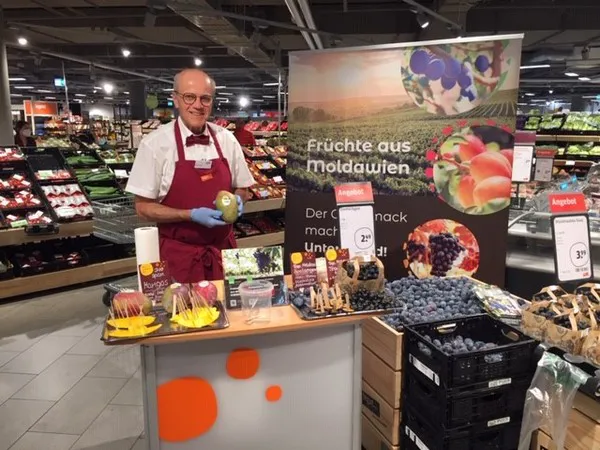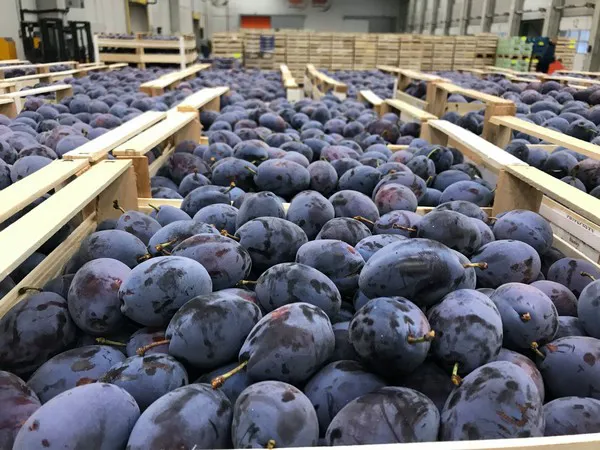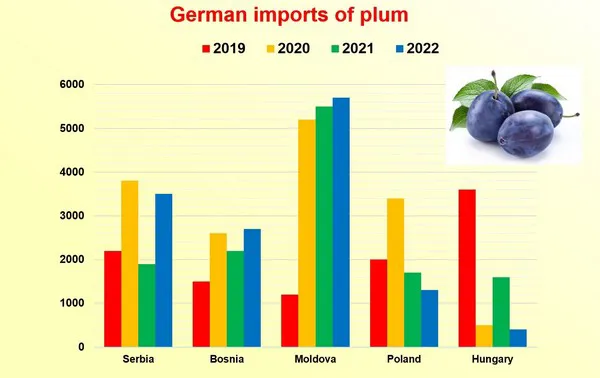Thanks to the partnerships established between Moldovan producers and German importers, Moldovan plums are gaining an increasingly high share of this market, and importers are looking for new suppliers of Moldovan plums every year.

According to Iurie Fala, CEO of Moldova Fruct, the country’s fruit growers and exporters association, the first Moldovan plums were sold to Germany in 2017. “At the time, 220 tons of plums were exported, but the quantity increased year after year, surpassing over 5,500 tons in 2021, according to data from the Agricultural Market Information Agency in Germany. Shipments to Germany increased again in 2022 despite the lower plum harvest compromised by late spring frosts.”
“Moldovan plum producers are trustworthy partners for us. Presently, Moldova is the source of 30 to 40 percent of the plums we import. We are satisfied with the quality of the goods, and we appreciate that they meet all our requirements regarding residue norms and delivery schedule. There is place for Moldovan apricots and grapes on the German market, but these fruits must be promoted so that the German consumer knows them,” says Kurt Halder, Sales Product Manager of OGA/OGV Nordbaden eG.

More Moldovan producers have obtained GLOBALG.A.P. and GRASP certifications for their fruits in recent years to meet the requirements of their EU partners. “This year, three producers successfully completed the SMETA audit for the first time. To be competitive, producers adapt their packaging and are extremely careful with applied production technologies to ensure fruit quality, keeping the residues as low as possible,” Fala states.
Despite a reduced plum harvest this year, logistical challenges, and greater transportation costs, growers from Moldova were able to meet delivery deadlines and provide high-quality plums to the German market and beyond. The season for Moldovan plums in Germany starts in mid- to late September and lasts until mid-November, depending on availability and quality.

“With a production area of approximately 20,000 hectares, Moldova produces up to 100,000 tons of plums annually. Moldova produces over a dozen types of plum, with Stanley, Kabardinca, Lepotica, and President the most popular varieties for export. Moldovan plums are available from early July to late November,” Fala concludes.
For more information:
Iurie Fala
Moldova Fruct
MD 2012 Chisinau (Moldova)
Tel: +373 222 23 005
Mob: +373 693 66 424
https://moldovafruct.md/en/
